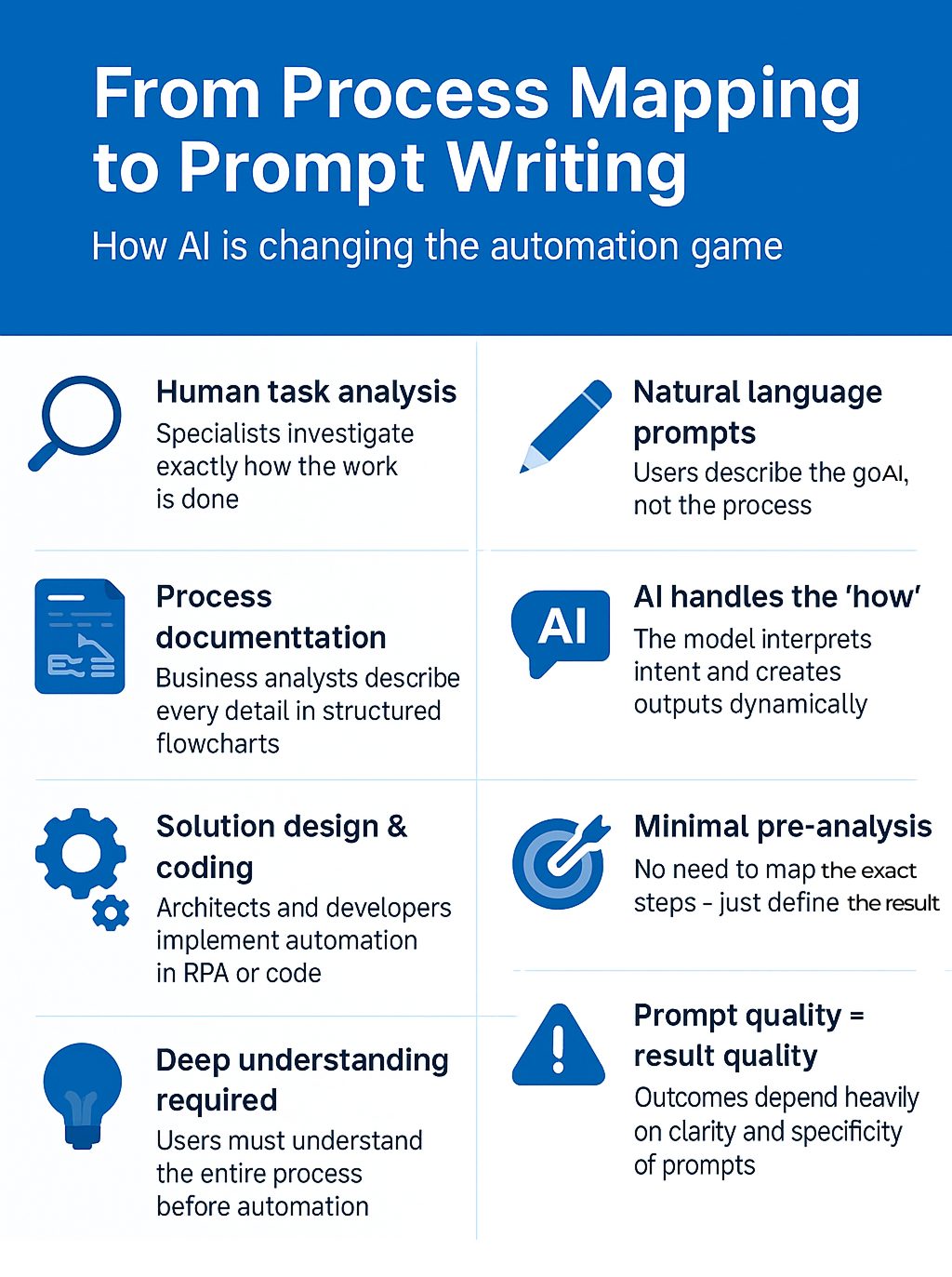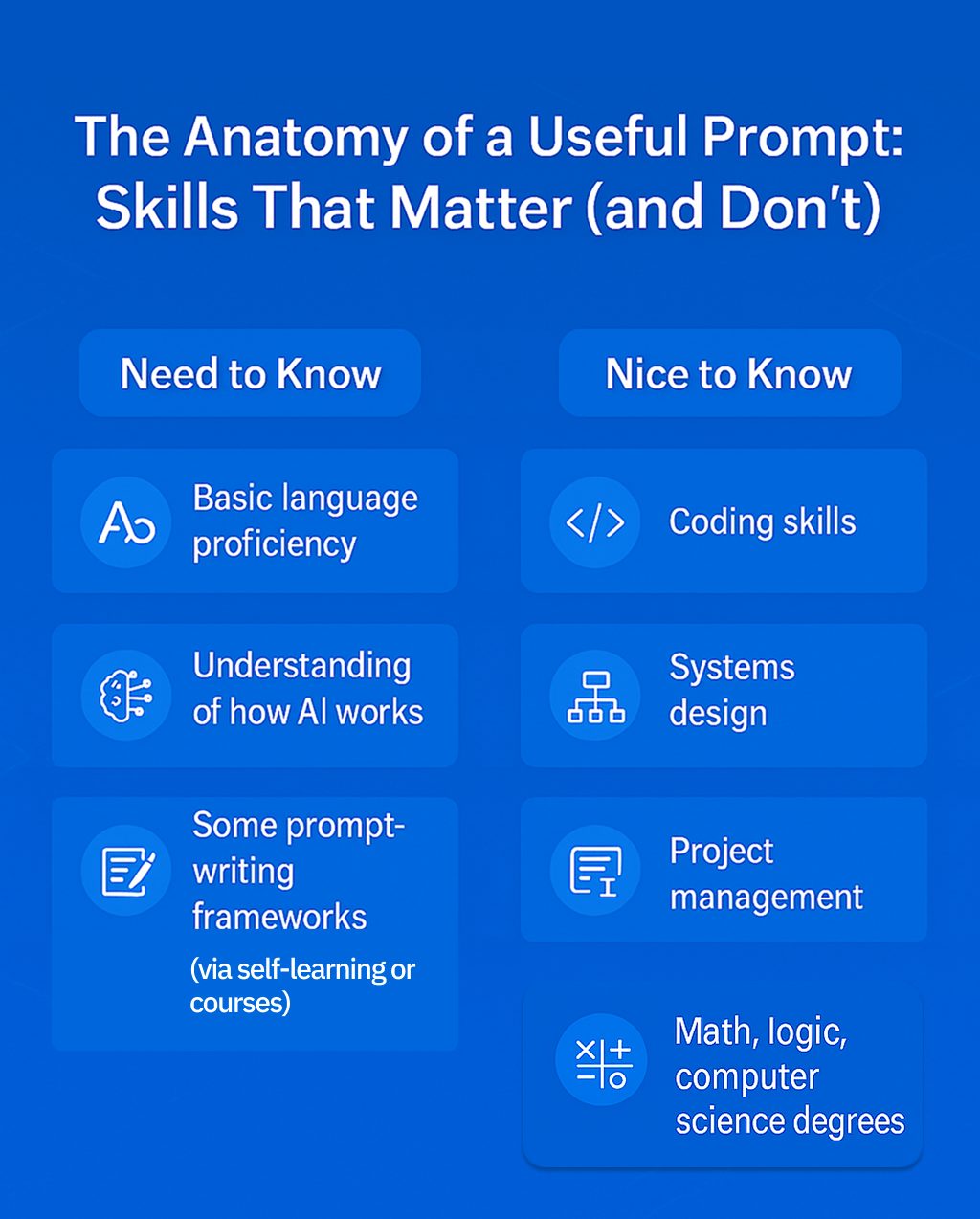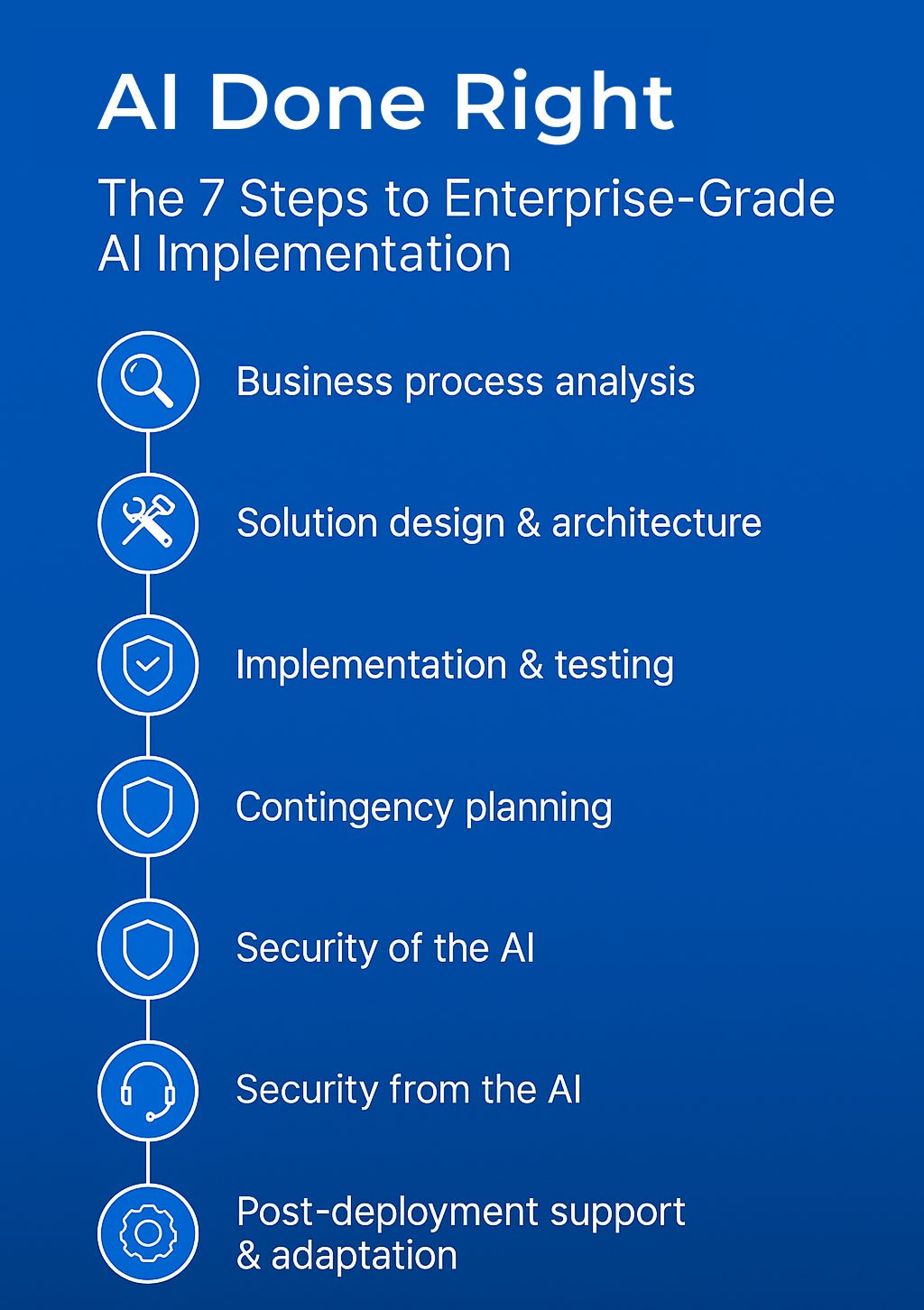Why Writing a Prompt Isn’t Really an AI Service – and What Actually Is
Let’s call things what they are. Prompt writing? It’s not a service. It’s a specification – a form of technical task-setting, like briefing a new hire. Except this “employee” is an AI assistant. This changes the game – but not in the way many assume.
Table of Content
In the early days of automation, the process was straightforward – and very human-driven. First, someone would manually figure out how a task was performed step by step. Then, a business analyst would document the process in detail, often turning it into structured workflows or diagrams. From there, a solution architect would design a technical approach, translating the logic into code or configuring RPA bots. Finally, developers would bring it to life, implementing the solution to automate the task reliably.
Now, with generative AI in the picture, expectations are shifting. Users don’t want to figure out what needs to be done. They want to tell the AI to “make it work” and move on with their day. Spoiler alert: it doesn’t work like that – at least, not yet.
Prompt Writing Is About Control, Not Creativity
You wouldn’t let a junior employee freestyle their way through a client contract – so why would you expect AI to magically solve your workflow problems without specific instructions?
That’s why prompt writing matters. The better the prompt (i.e. the clearer the task), the more reliable the result.
But – and here’s the kicker – is writing a prompt really a valuable service? Our take: No. Its impact is massive (80% of AI output depends on it), but the act of writing it? Minimal value. Why?
The truth is, writing a solid prompt doesn’t require a computer science degree, systems engineering background, or deep knowledge of algorithms and programming languages. You don’t need decades of IT experience, either. What you do need is much simpler: a basic understanding of how generative AI works, a grasp of prompt-writing principles (which you can pick up through a short course or some self-learning), and a healthy dose of curiosity. Add a bit of trial and error, and you’re well on your way.
It’s a bit like how people in the ’90s reverse-engineered undocumented DOS features. Only now, the AI is happy to explain itself – if you know how to ask.
So… Do You Still Need IT Companies for AI?
Let’s entertain the idea: with all this DIY AI tooling out there, do IT services still matter?
Answer: Absolutely – just not in the old way.
Imagine two people learning how to write prompts:
- One is a student with endless time for YouTube, no bills, and a fridge full of food.
- The other is a working professional juggling KPIs, tight deadlines, and 45 minutes a day for self-education.
Now ask yourself – who’s more likely to build an AI solution that aligns with business goals, integrates securely into enterprise systems, and actually delivers ROI?
Not the student.
The real advantage lies with professionals supported by experienced IT partners – teams who understand both the tech and the business. That’s where IT companies still play a critical role.
What’s the Actual AI Service?
Let’s be clear: real AI service is not prompt writing. And it’s definitely not just dropping a chatbot on your site and calling it a transformation strategy. What actually delivers value looks a lot more like the steps outlined in that “AI Done Right” visual.
It starts well before any line of code is written. First, someone needs to analyze what business processes even make sense to automate – because automating the wrong task is the fastest way to burn money with zero return. Then comes the architecture: designing a solution that fits the business like a glove, not just something that shows off GPT’s latest trick.
Implementation is often the fun part – but only when everything before it is solid. Things get real when you factor in contingency planning because AI has this delightful habit of occasionally going off-script or hallucinating a little too confidently. And let’s not forget security: both protecting the AI system itself and protecting the business from the AI when it’s granted access to critical infrastructure. You can’t just plug it in and hope it behaves.
Finally, AI doesn’t live in a vacuum. Post-deployment support and ongoing adaptation are what separate companies that use AI from companies that leverage it. Because models degrade, goals shift, and the market doesn’t wait for version updates.
And all of this assumes your data is actually clean, labeled, relevant, and SMART. If not… you’re not building AI – you’re setting yourself up for a debugging marathon disguised as innovation.
The Right Partnership Wins
At the end of the day, building AI solutions that actually work isn’t about throwing prompts at the wall to see what sticks. It’s about the right partnership: a seasoned consultant who gets the business logic, an IT vendor who can build and support the thing without breaking your infrastructure, and – yes – someone who knows how to craft a killer prompt when it really matters. Or hey, skip all that and just write prompts for fun. That’s still entertaining… just don’t expect it to drive real outcomes.


